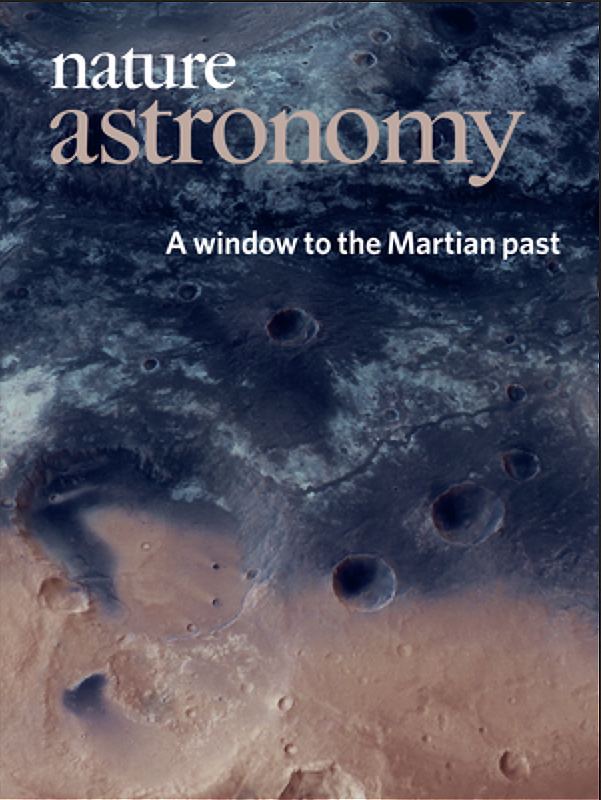-
Signs of Warmth in Mars' Past
February 27, 2018 / Written by: Miki HuynhJanice Bishop, Senior Research Scientist at the SETI Institute and member of the Changing Planetary Environments and Fingerprints of Life Team of the NASA Astrobiology Institute, has developed a new climate model for Mars that may explain how surface clay minerals at regions such as Mawrth Vallis formed— rocks that would be geochemically created by an early presence of warm, liquid water.
While previous climate models could not account for such formations, the SETI Institute team’s new model suggests that the cold early climate of Mars may have been interrupted by sporadic short-term bursts of warmer, wetter environments to create these surface clays.
The research is published in Nature Astronomy, and is featured on the cover of the March 2018 issue. The paper can also be viewed as an E-print.
A science news story is available at the SETI Institute.

March 2018 cover of Nature Astronomy. A new climate model suggests that short-term periods of warm environments during Mars cold past may explain the present day surface mineralogy of Mars. Source: Christoph Gross / Bethany Vukomanovic / Nature AstronomySource: [Nature Astronomy (via SETI Institute)]
- The NASA Astrobiology Institute Concludes Its 20-year Tenure
- Global Geomorphologic Map of Titan
- Molecular Cousins Discovered on Titan
- Interdisciplinary Consortia for Astrobiology Research (ICAR)
- The NASA Astrobiology Science Forum Talks Now on YouTube
- The NASA Astrobiology Science Forum: The Origin, Evolution, Distribution and Future of Astrobiology
- Alternative Earths
- Drilling for Rock-Powered Life
- Imagining a Living Universe
- Workshops Without Walls: Astrovirology